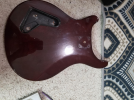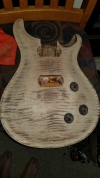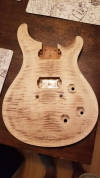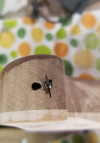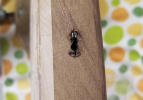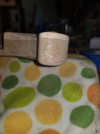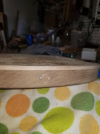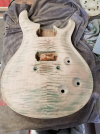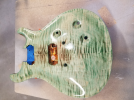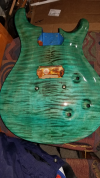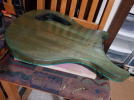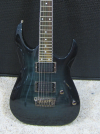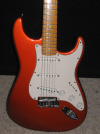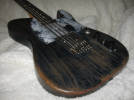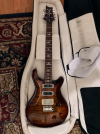I had a DGT 10-top cherry burst that had a big finish chip on the lower cutaway, and asked a shop to patch that spot so it wouldn't spread further. Their tech totally screwed up the job, tried shooting red to cover his mistake but didn't match the color or the transparency, then sat on it for a year giving me BS stories why it wasn't ready. Finally he, and the shop manager, got fired by the owner, who was so apologetic when he found out what they'd done, that he stripped and reshot the top resulting in a gorgeous cherry burst, that I think is the equal of the finishes PRS does.
It turned out so pretty I hated taking it out because it looked like a collector's piece, and since I already had a DGT Goldtop which is somewhat beaten up, it stayed at home. Eventually, my son-in-law, who is a Berklee grad in guitar and vocal performance, saw it, played it, and was so in lust with it I gave it to him for his birthday. The way he touched it was almost disgusting, but he loves it and uses it for special shows.
That's it on the left. The photo makes the red look a little darker and less transparent than it really is. The flame shows through on the edges when seeing it in person.
View attachment 88111
A while after getting the cherry burst back I had the goldtop in the shop because it had an intermittent wiring problem, and the tech pointed out that there's a lot of flame underneath the gold finish. You can barely see it in the photo, but the finish settling has really made it stand out. We talked about stripping the finish and reshooting it in a burst, then decided "Naaaah!" and left it alone.

